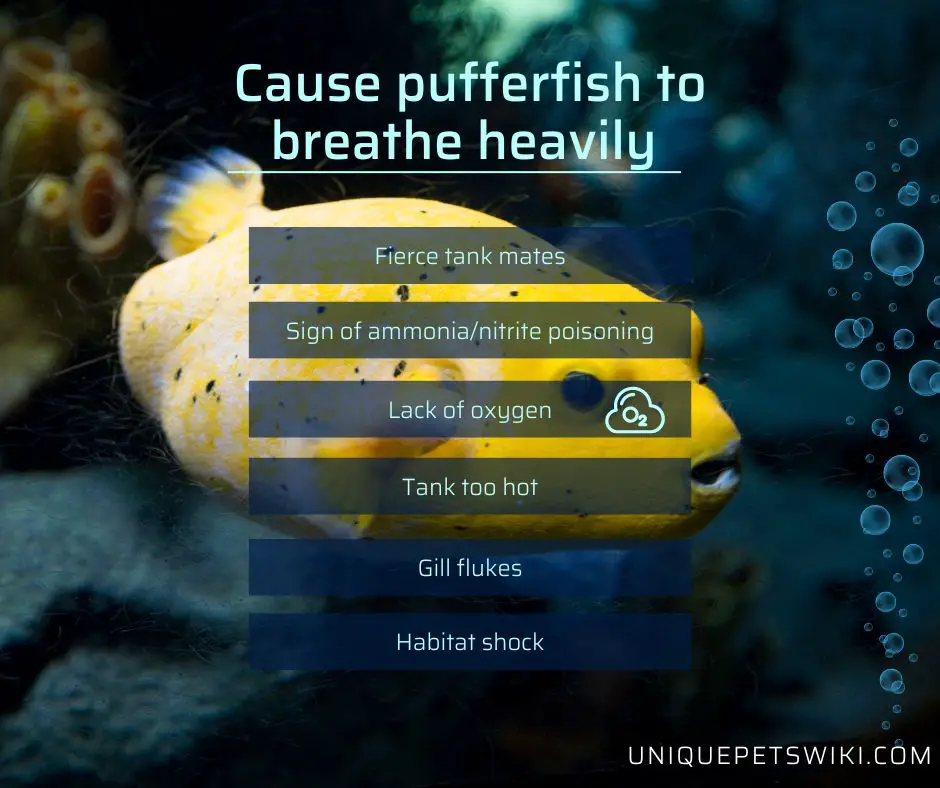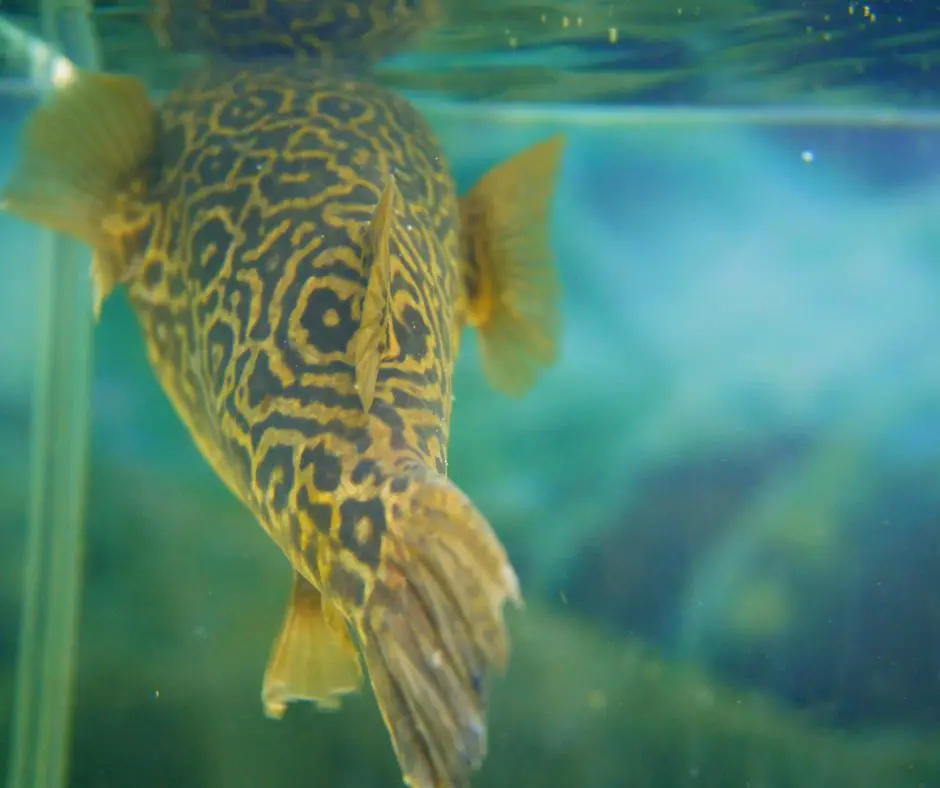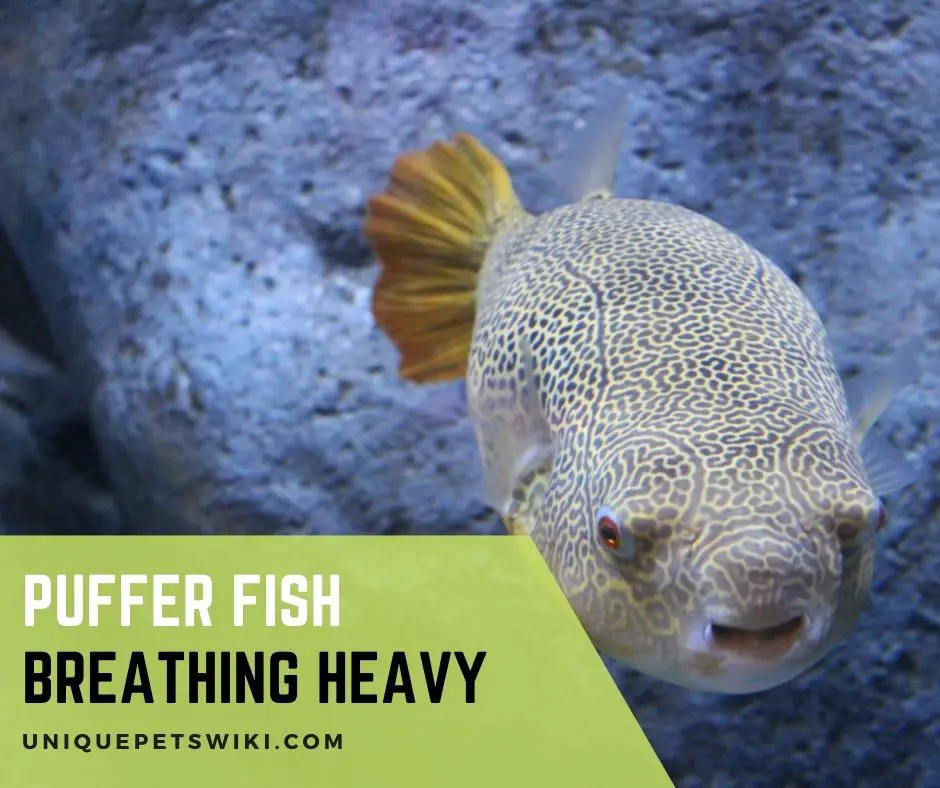One of the most important aspects of prolonging your puffer’s life is understanding why puffer fishes breathe heavily, the potential causes of this phenomenon, and how to deal with it should it arise.
For new puffer fish owners, there may be apprehension about the potential behaviors or phenomena to look out for when caring for these pets.
Hence, this article explores the aspect of heavy breathing in puffer fishes, and a number of actions to deter any fatalities from it.
You will learn how to protect your pet from some causes of heavy breathing which can be serious, as well as immediate interventions to prevent fatalities in case your pet starts to breathe heavily.
Contents
What Should You Do If Puffer Fish Is Breathing Heavy?
You will need to immediately diagnose the problem and make adjustments to your pet’s living environment to prevent its death.
We provide a quick checklist to help you determine the cause of the problem for a speedy intervention.
- What’s your tank size? Is it large enough for your puffer fish? Did you recently change the tank?
- What are the levels of nitrates,nitrites, ammonia? When did you last measure these parameters?
- How about the other water parameters, are the temperature and oxygen levels sufficient for comfortable habitation?
- Have you been providing any in-tank, ick treatment? Perhaps you should stop this until the problem has been properly diagnosed.
- Have you recently changed the water or feeding schedule of the fish?
- Do you have a list of all products used in the tank?
- Have you recently added anything new to the tank?
- How long has the aquarium been set up, and how do you cycle it?
You will also need to observe the behaviours of the puffer fish as this can also point to the cause of the problem. The checklist below is handy in this regard.
- Is the puffer fish floating?
- Does it stay in one place at the bottom of the tank?
- Has its feeding habits changed? When did it last eat?
- Did you recently ship it home? How long did this take?
- What is the temperature of the water, and is the thermometer functioning correctly?
- Is there any surface turbulence from an airstone or powerfilter?
- Are all the other fishes fine except a particular one?
If your assessment of potential issues is done keenly, you will be able to determine the source of the problem and work out a solution for safe-keeping of your pets.
Why Are Puffer Fish Breathing Heavy
Puffer fish breathing heavy is abnormal behavior, and it is a valid cause of concern. As grim as this may sound, heavy breathing can result in death after one or two days, often because it is caused by serious anomalies.
Lack of oxygen, water shock, and incorrect water parameters can all cause heavy breathing.
It is advisable to change part of the water immediately, as dilution lowers the concentration of toxins that may be lurking in the water.
This allows you some time to investigate if there could be other factors contributing to the heavy breathing, while the possibility of water toxicity is mitigated.

Fierce Tank Mates
When puffer fish are kept together with aggressive tankmates, they may breathe heavily from darting around the tank when being chased.
Even though this is rare, exertion as a result of living with unfriendly mates may cause heavy breathing.
In addition to exertion, a puffer fish that senses danger from its tankmates may inflate its body and curve its tail as defense mechanisms. You may also notice it trying to stay as far away as possible from the aggressor.
Separating the puffer fish from the unfriendly tankmate immediately is important, as prolonged exertion may only compound its stress and decrease its life expectancy.
Sign of Ammonia/Nitrite Poisoning
Ammonia poisoning may also cause heavy breathing, as it significantly compromises your pet’s respiratory ability.
When the pH levels are thrown off balance and the nitrogen cycle is upset, the resultant water environment becomes toxic and harmful to the immunity of the fish.
Due to the compromised respiration, your fish will likely breathe heavily, and any delays in rescuing the situation may further harm it.
Ideally, nitrate levels should be maintained at below 20, and partly changing the water plus fixing the filtration system are important.
Additionally, you could use Melafix in the tank for at least one week to treat any bacterial infections that may have arisen from the toxicity.
Melafix Liquid Remedy 16 oz.
- Country Of Origin: United States
Last update on 2022-12-29 / Affiliate links / Images from Amazon Product Advertising API
Lack of Oxygen
Insufficient oxygen in the water is often caused by a malfunctioned air pump, or a filter that has slowed down because it cannot service the capacity of the tank.
The fish responds to such a scenario by floating just below the surface and gasping to take in as much oxygen as possible.
You may need to reset the air pump or filter immediately to restore their normal functionalities. Changing the water also provides an easy way to supplement the oxygen levels in the tank.
Tank Too Hot
An overheated tank is also likely to cause heavy breathing in your puffer fish. The ideal temperatures for these fishes generally range between 74°-78°F, anything above this will likely stress them out.
If your puffer has tankmates, you will likely notice them breathing heavily too.
Adding some ice cubes , setting a fan near the tank and changing the water all work to lower the temperatures. Just be sure to lower the temperatures gradually to avoid thermal-shocking your pets.
Marina Deluxe Floating Thermometer with Suction Cup
- Easy-to-read floating thermometer
- Includes a safety zone indicator
- Equipped with suction cups
- Ensures your aquarium is at a proper temperature
- Temperature range of 30 to 120 degrees Fahrenheit
Last update on 2022-12-29 / Affiliate links / Images from Amazon Product Advertising API
Gill Flukes
When the gills of the fish are infested with flukes, you will notice your puffer breathing heavily. Often such gills will scratch themselves on surfaces in the tank, and have red dots and sores on their bodies from scratching.
Their gills may also appear to have more mucus than normal, and will also spot ulcers from the infestation. If you notice these symptoms in your puffer fish, it is important to take it to a pet specialist immediately.
Habitat Shock
Sudden changes in the water including in parameters like mineral content, acidity, and alkalinity often interfere with the puffer’s osmotic regulation, and this sends them into shock.
Transporting them over a long duration of time and then introducing them into a tank may cause this scenario.
Additionally, when the puffer fish is used to living in a reef tank, a sudden change in its usual environment may cause shock due to inhibited acclimatisation.
Such occurrences are more probable when the fish handler is a new owner with limited experience.
Darting across the water, swimming close to the surface, curving its tail, and heavy breathing are some signs exhibited by puffers when in shock.
When these symptoms manifest, you need to quickly set the right water parameters for your species of puffer fish.
Hence, before you bring your pet home, be sure to know which kind of water habitat it is suited for. There are different species of puffer fish living in fresh, brackish or salty water, and placing your pet in an unsuitable environment may be catastrophic.

Ideal Water Parameters to Keep Puffer Fish Healthy
A freshwater puffer fish is best kept in temperatures ranging between 74°-78°F. Very high temperatures will likely shock and stress them. Having a thermometer handy is crucial in maintaining these conditions.
Additionally, for smaller-sized imitator of dwarf puffer fishes, a tank of at least ten gallons is advisable. The larger the fish, the bigger the size it requires. Emphasis should be laid on having a tank with a wider bottom than a longer depth.
In terms of pH, aim for readings between 7 to 7.6, as these are the most suitable levels of neutrality.
In addition, for water hardness, measures between 8-12dKH are ideal. Nevertheless, these parameters may vary slightly given the freshwater species you have acquired.
FAQs
Do puffer fish play dead?
Sometimes, but rarely. The fish might actually be sleeping, stressed, sick, or unfortunately, about to die. It is best to observe it closely for signs of life or to nudge it with a soft material to see if it remains still.
Do not touch a puffer fish with bare hands especially if it is all puffed out.
Why is my puffer fish swimming up and down?
This is likely caused by a very small tank. Without sufficient space for it to swim in, your puffer may resort to swimming up and down.
Why is my fish breathing heavy at the bottom of the tank?
This could be caused by different reasons, ranging from toxic water parameters to a small tank. It would be important to check the pH and ammonia levels, water temperatures, and the filtration system.
How can you tell if a puffer fish is stressed?
Puffing up, Breathing heavily, reduced mobility, paler shades of colour and lesions on the skin, reduced feeding, floating or sinking for prolonged periods of time, and puffing are signs of stress in a puffer
How do you get air out of puffer fish?
You may need to hold the puffer fish by its tail under the water, its head facing upwards, and shake it gently till it releases the air from the mouth.
Be sure to wear a glove for this as puffer fishes may release dangerous toxins from their bodies.
Conclusion
A puffer fish breathing heavily is often a sign of distress, and immediate measures should be put in place to rectify any anomalies.
Ammonia poisioning, overheated environments, and insufficient oxygen levels in the tank can easily stress out your pets and make them breathe heavily.
It is important to take any heavy breathing symptoms seriously, as the more exposed the puffer is to any dangers, the higher the likelihood of it dying.
Consistently measuring your water’s parameters and observing the fish’s behaviors can go along way in saving your pet from the causes of its heavy breathing.


